Straddling the continental divide, Rocky Mountain National Park is a dramatic landscape of mountain peaks, alpine lakes, and beautiful waterfalls. It’s also home to abundant wildlife such as black bears, moose and elk.
Would you like to learn more about this wonderful park? Let’s take a look at some interesting facts about Rocky Mountain National Park.
Here are 10 fun facts about the Rocky Mountains that you never knew you needed to know!
Subscribe to daily national parks planning tips, travel inspiration and trip ideas and get instant access to the free PDF
10 Fun Facts About Rocky Mountain National Park
No time right now to read these fun facts about Rocky Mountain National Park? Pin It and save it for later:
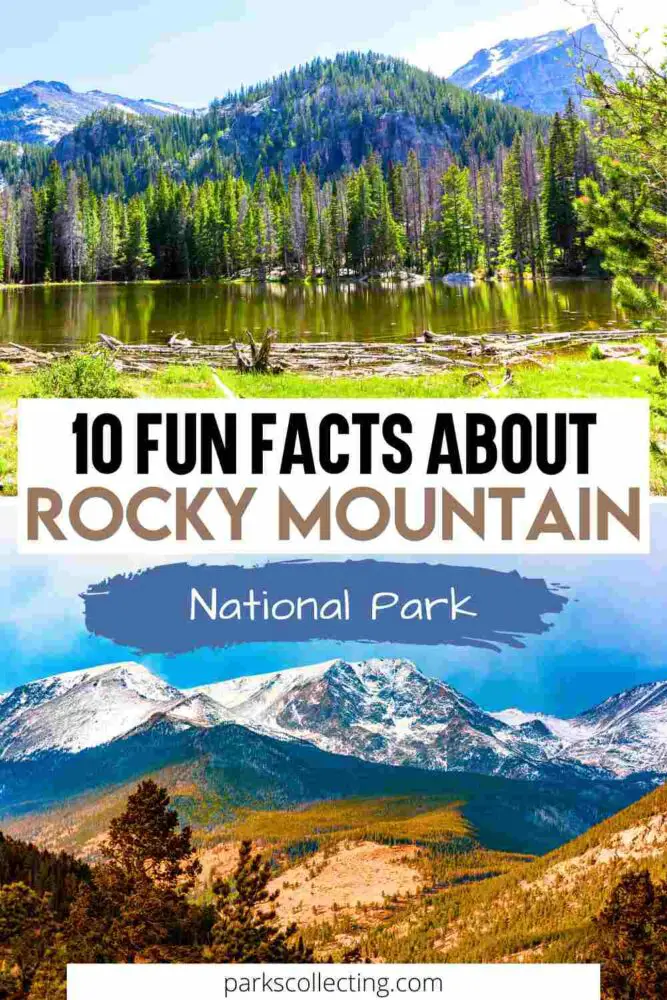
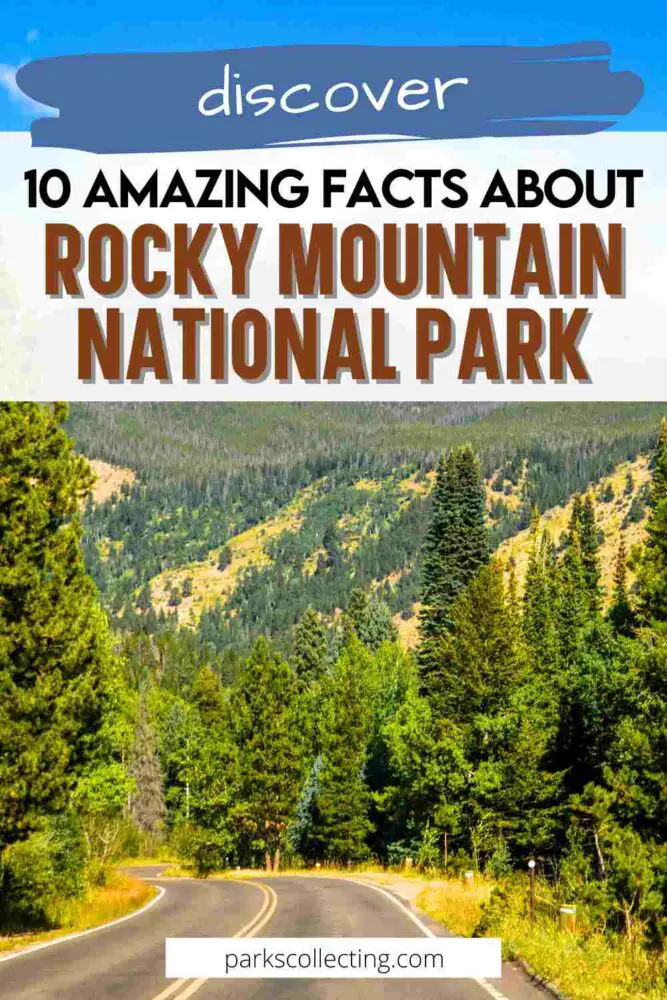
🛏️TOP HOTEL PICK: Check availability now
🚘FIND THE CHEAPEST CAR RENTAL: Search Discover Cars for the best deals
✈️FIND THE CHEAPEST FLIGHTS: Search Skyscanner for the best deals
🧳GET TRAVEL INSURANCE: Get insured with Travelex before you go
📱TAKE AN AUDIO TOUR: Buy an audio tour now
Table of Contents
Basic Rocky Mountain National Park Facts
⭐ Location: Colorado
⭐ Size: 415 square miles | 265,807 acres
⭐ Number of Visitors each Year: 4,300,424 people visited Rocky Mountain National Park in 2022. The busiest year was 2109, when the park had 4,670,053 visitors
⭐ Annual Rainfall: Just over 13 inches (east side | Estes Park] and almost 20 inches (west side | Grand Lake)
⭐ Highest Rocky Mountain National Park elevation: 14,259 feet (Longs Peak)
⭐ Lowest Elevation of Rocky Mountain National Park: 7,630 feet (Big Thompson River)
⭐ Date it Became a National Park: The park was established on January 26, 1915 by President Woodrow Wilson
10 Fun Facts About Rocky Mountain National Park
1. Rocky Mountain has over 125 Peaks
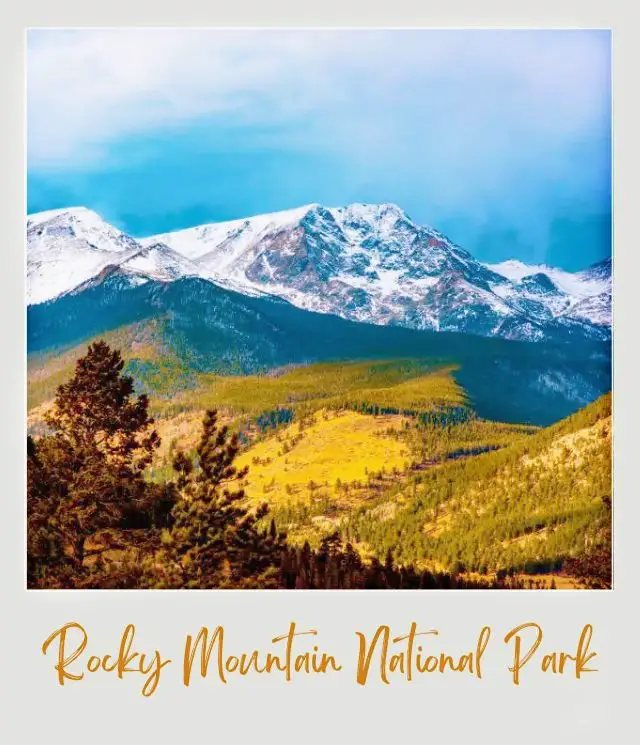
Although there are 58 ’14ers’ (a peak over 14,000 feet) in the state of Colorado, only one (Long Peak) is inside the national park.
That doesn’t mean the national park has a shortage of mountains, though. The park may be called Rocky MOUNTAIN, but there in fact over 120 peaks in the mountain(s). And 60 of these are 12,000 feet or higher.
➡️ READ MORE: Rocky Mountains (Smithsonian Natural History Series)
2. Rocky Mountain is one of the highest national parks in the country
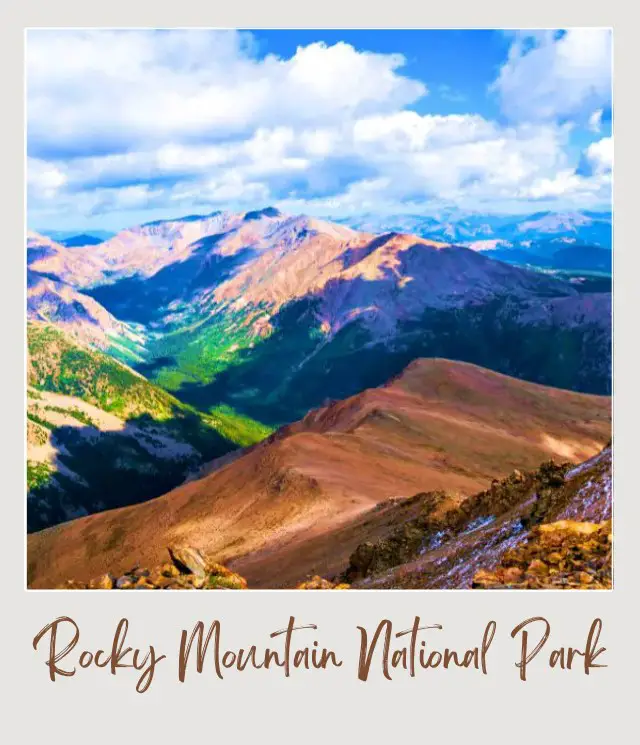
This is one of the highest national parks in the country and you’ll be surrounded by stunning mountains scenery when you visit. The lowest elevation in the park is 7,630 feet, which is higher than the peaks in many other national parks. It tops out at an awe-inspiring 14,259 feet (Longs Peak).
While this makes the national park incredibly beautiful, the height does come with downsides. You may well experience some degree of altitude sickness for a few days when you first arrive from lower altitudes. Common symptoms include headaches, shortness of breath, insomnia and rapid heartbeat. To minimize symptoms, drink lots and lots of water, eat regularly, avoid alcohol, and get plenty of rest.
The other thing to be aware of is that there is less atmosphere for the sunlight to pass through, so you can burn easily. Wear sunscreen, a hat, and sun glasses.
➡️ READ MORE: The Photographer’s Guide to Rocky Mountain National Park
3. The highest continuous paved highway in the country crosses Rocky Mountain National Park
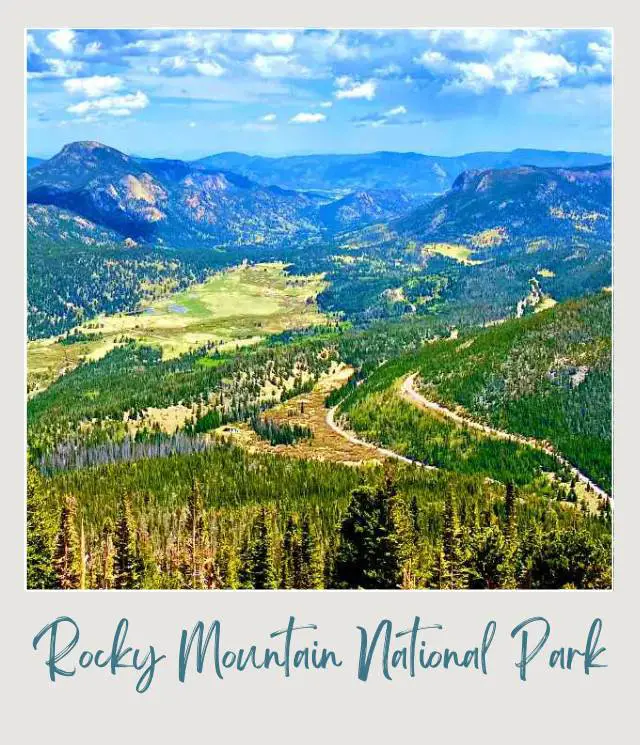
One of my favorite cool facts about the Rocky Mountains is that it lies across the Continental Divide. One road crosses this, connecting one side of the park to the other. The park’s Trail Ridge Road is not only the highest continuous paved highway in the US, it’s also one of the most scenic drives in the country.
Here you’ll enjoy expansive mountain view, wildlife sightings, and stunning wildflower-covered alpine meadows.
Trail Ridge Road was built in 1932. It connects Estes Park in the east and Grand Lake in the west, rising above the tree line and crossing tundra as it rises to its highest point, 12,183 feet. Be sure to visit the Alpine Visitor Center, the highest visitor center in the entire National Park Service system (11,796 feet | 3,595m).
The road is scenic, but if you plan to drive it, be aware that it closes in winter (October – May) due to heavy snowfall.
➡️ READ MORE: Natural History of Trail Ridge Road, A: Rocky Mountain National Park’s Highway to the Sky
4. Rocky Mountain National Park is a true wilderness
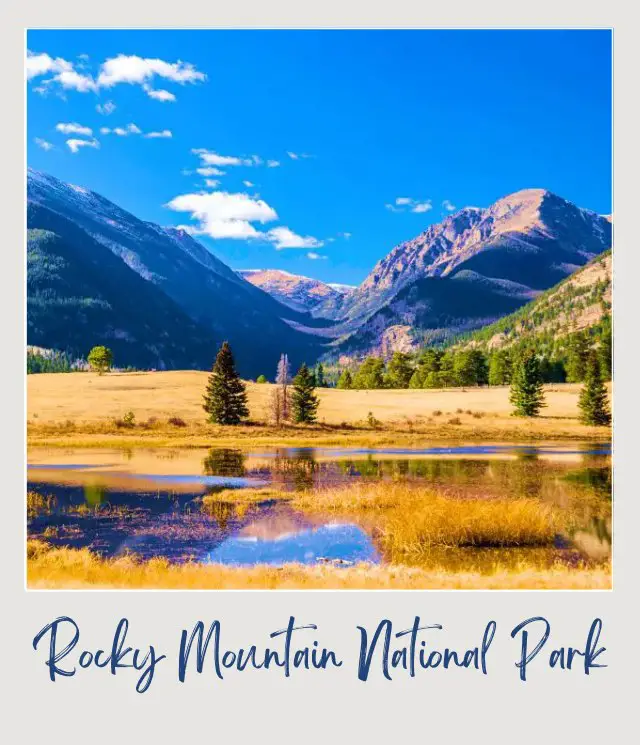
More than 95% (almost 250,000 acres) of the Rocky Mountain National Park was officially designated as wilderness by Congress in 2009. This helps protect the park’s alpine peaks, delicate tundra, meadows, and forests.
If you really want to head out into the wilderness, you’ll a backcountry permit for wilderness camping. Also be ‘bear aware’. Between April 1 and October 31, all food items and garbage must be secured inside a hard sided bear-resistant food storage canister.
➡️ READ MORE: Memories of Rocky Mountain National Park
5. Rocky Mountain National Park has 355 miles of hiking trails
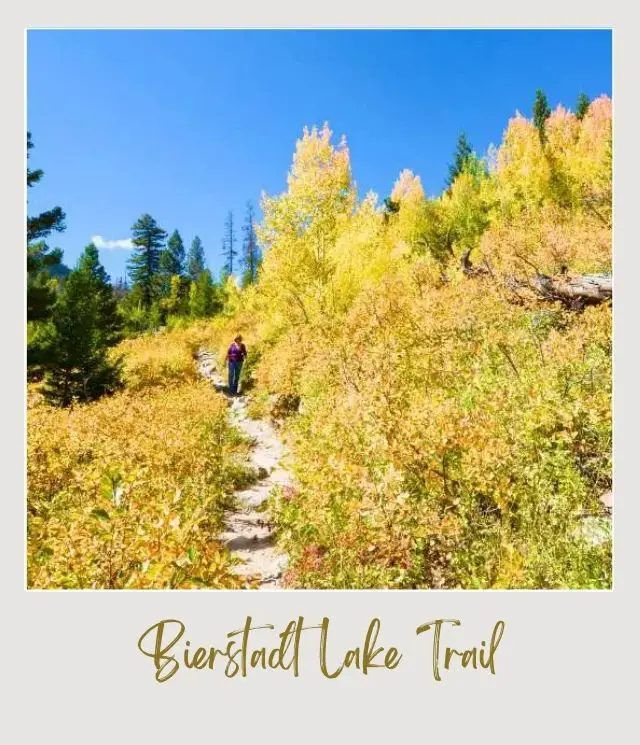
There are 355 miles of hiking trails to help visitors get out into the wilderness and enjoy the grandeur of nature at its best.
This means that there is truly something for everyone. A very popular easy trail is the 0.8-mile hike to Bear Lake, a beautiful blue lake that often works as a mirror to reflect the surrounding mountains. For a longer walk, you can continue to Nymph Lake and Dream Lake.
There are no shortage of lakes, waterfalls, peaks and meadows to hike to, over, around and through.
➡️ READ MORE: Best Hikes in Rocky Mountain National Park
6. There are four distinct ecosystems in the park
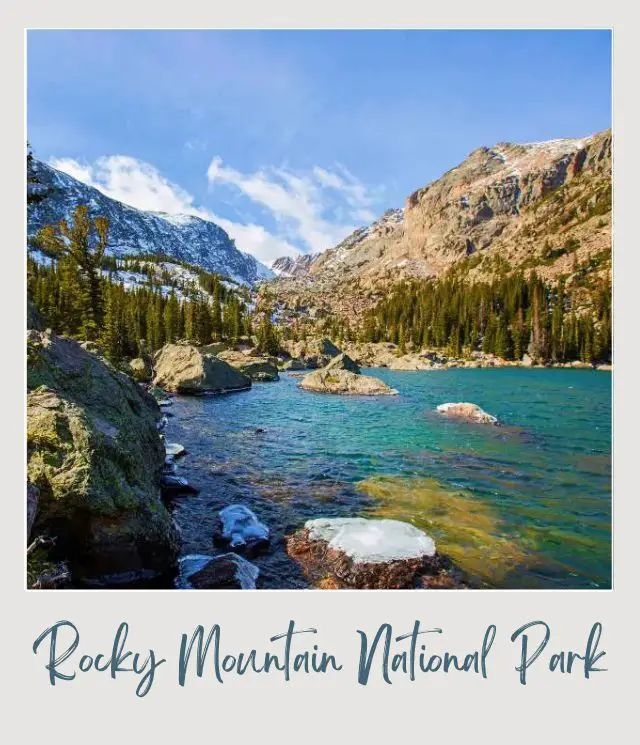
Although you immediately think of mountains, there are, in fact, four different ecosystems in the national park: Montane, Subalpine, Alpine, and Riparian.
Montane (5,600 to 9,500 feet): This is the lowest, warmest and driest region in the park. There’s a 10° difference in temperature. Here you’ll find mountain meadows, ponderosa, lodgepole, and Douglas fir forests.
Subalpine (9,000 to 11,000 feet): Winters are long and cold, summers are short and cool, and there’s an average of five feet of snow (or more) in this part of the park. Most of Colorado’s ski resorts are in the subalpine ecosystem. Here you’ll find spruce and fir tree forests and the sparkling lakes that the park is famous for.
Alpine (11,000+ feet): Above the tree line is alpine tundra. Summer temperatures are generally 20° cooler than in the montane. Winters are long (October to May) and cold. Winter temperatures are below freezing, and winds can reach over 100 mph. Most of the annual precipitation, 40 inches, falls as snow. Here you’ll find an occasional ragged tree clinging to life, but there are mostly low-level plants that can survive the harsh climate.
Riparian (throughout the park): This ecosystem is found flowing through all of the other ecosystems of park. Riparian areas include communities surrounding lakes, ponds, streams, and rivers.
➡️ READ MORE: Rocky Mountain Nature Set: Field Guides to Wildlife, Birds, Trees & Wildflowers of the Rocky Mountains
7. Rocky Mountain is one of the best places in the country to watch wildlife
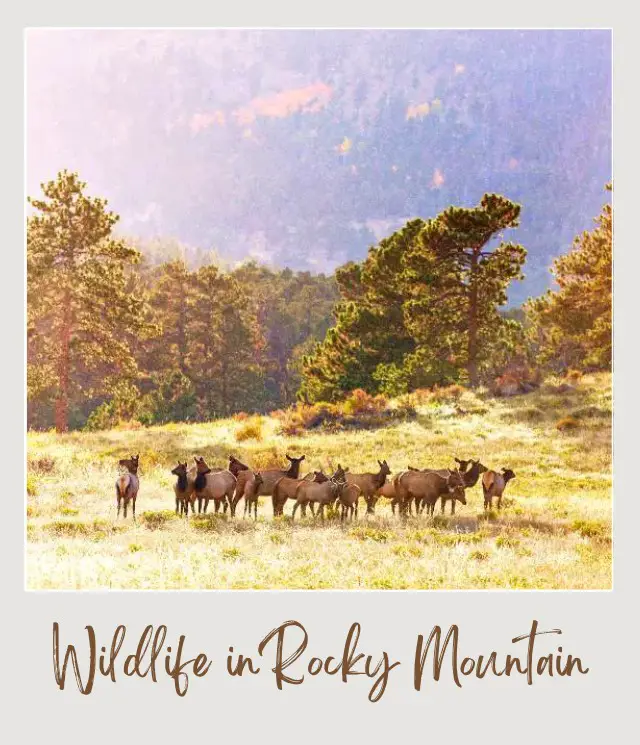
Wildlife watching is rated the number-one activity by most visitors to Rocky Mountain National Park. Which is not surprising given that the national park is home to more than sixty species of mammals and nearly 300 bird species.
This is a great place to see elk, bighorn sheep, black bears, mountain lions, and moose. The park is home to an elk herd numbering between 600 to 800 in the winter, about 350 bighorn sheep, numerous mule deer, and a small population of moose! One of the most interesting facts about the Rocky Mountains is that elk are often seen wandering the streets of nearby Estes Park during their fall rut season.
When watching wildlife, always stay at least 120 feet from bears and moose, 75 feet from elk and bighorn sheep and 25 feet from other animals.
➡️ READ MORE: Rocky Mountain Nature Guide
8. Rocky Mountain National Park is a winter wonderland
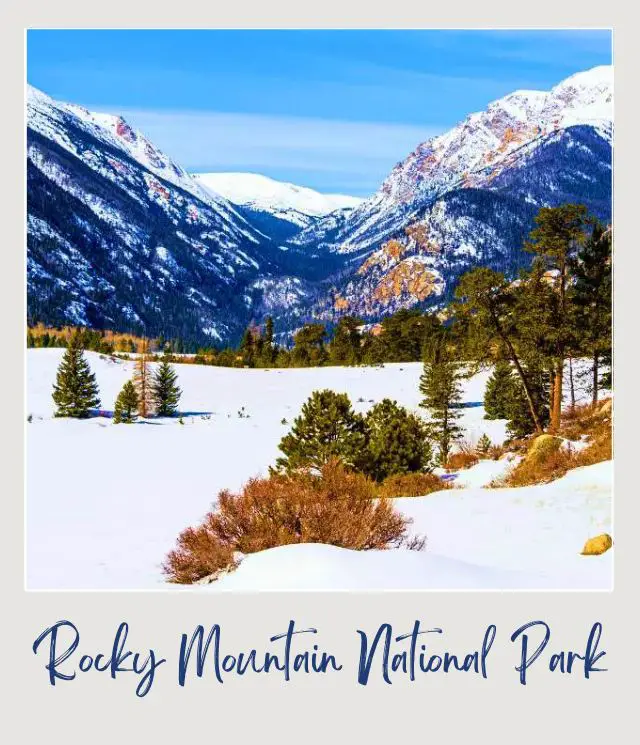
Although the Trail Ridge Road is closed October – May and most of the trails are buried deep under snow, this doesn’t mean there is nothing to do. In fact, winter is a great time to visit Rocky Mountain National Park.
You can go sledding or tubing at a former Hidden Valley ski resort inside the park or downhill skiing or snowboarding at ski resorts nearby.
Although the trails are covered in snow, they aren’t all off limits. Winter hiking (strap on those microspikes and go!); cross country skiing and snowboarding are all great ways to enjoy the stunning snowy scenery.
These just some of the things you can enjoy in winter in Rocky Mountain National Park.
➡️ READ MORE: Best Things To Do in Rocky Mountain National Park in Winter
9. Rocky Mountain has some fascinating historic sites
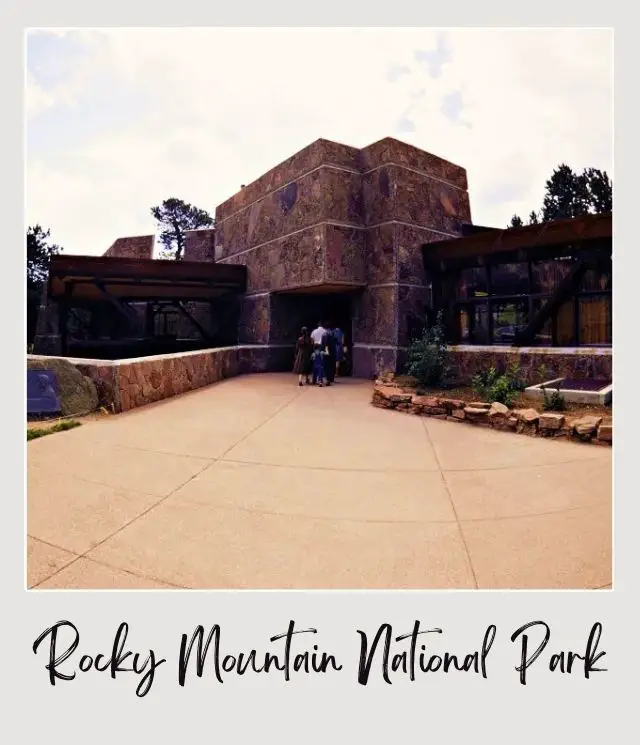
The national park isn’t all about nature. One of the unique things about Rocky Mountain National Park is its collection of historical sites and museum collections.
There are two major historic sites inside the national park, and an extensive museum collection of 33,465 cultural objects, 294 works of art, 10,495 biological specimens and 455 geological specimens.
Holzwarth Historic Site
The Holzwarth Historic Site is located on the West Side of the park, in Kawuneeche Valley. This started out as a single cabin, built by German immigrants John and Sophia Holzwarth in 1917 on 160 acres they had just obtained right next to the newly minted Rocky Mountain National Park.
Over the next decade or so, they built more cabins, sheds and a barn, and bought another homestead, Fleshbut cabin (later renamed Never Summer Ranch) across the Colorado River. This then morphed into a “dude ranch” known as the Holzwarth Trout Lodge.
In 1974, the successful homestead and business was purchased by The Nature Conservancy and eventually transferred to the National Park Service.
Today, you can explore the buildings and learn about the life of early Colorado homesteaders. The site is open year round and tours are offered in summer.
Moraine Park Museum
The Moraine Park Museum and Amphitheater is in the northeast corner of Moraine Park.
Between 1905 and 1923, Imogene Greene MacPherson built the Moraine Lodge, a collection of rustic buildings used to house visitors to Rocky Mountain National Park. After her death in 1928, the National Park Service bought the property and turned it into a Visitor Center.
By 1936, the CCC converted the Moraine Lodge’s Assembly Hall to a National Park Service museum. Today, the museum displays natural history exhibits.
➡️ READ MORE: Making Rocky Mountain National Park: The Environmental History of an American Treasure
10. Some of the first female nature guides were licensed to guide in Rocky Mountain National Park

The first licensed woman guide in the United States was actually Mamie Henkel Burns in Glacier National park in 1913. However, just four years later in 1917, the next round of female “nature guards” were licensed to guide – in Rocky Mountain National Park.
It’s commonly thought that two sisters, Elizabeth and Esther Burnell, were the first female nature guides, but in fact, a Denver Post article on July 13, 1917 stated that Lydia Bragstad, Hazel Davis, Ellen M. Knowles, and Edna Knowles – not the Burnell sisters – were the first to complete the licensing requirements.
Tourists paid a small fee to hire the women guides, but the NPS made their services available through the park’s administrative office in Estes Park.
Esther Burnell has traditionally been credited as being the first licensed woman guide in the NPS, followed shortly by Elizabeth. However, the Burnell sisters became licensed guides in 1918 and they were therefore the 6th and 7th women nature guides for the NPS.
That doesn’t diminish their – or the other guides’ – achievements. This was extraordinary at the time and all these women were trailblazers.
➡️ READ MORE: A Baby’s Life in the Rocky Mountains
More information about Rocky Mountains National Park
⭐ Rocky Mountain National Park Guide
⭐ Planning A Trip to Rocky Mountain National Park: 7 Mistakes to Avoid
⭐ Guide to Rocky Mountain National Park Timed Entry
⭐ 20 Best Things To Do In Rocky Mountain National Park In Winter
⭐ Best Hikes in Rocky Mountain National Park
⭐ How to Get to Rocky Mountain National Park
⭐ The Airports Near Rocky Mountain National Park
⭐ Closest Airport to Rocky Mountain National Park
⭐ Best Time to Visit Rocky Mountain National Park
⭐ Visiting Rocky Mountain National Park: What To Expect Throughout the Year
⭐ 10 Tips For Visiting Rocky Mountain National Park
⭐ The Best Vacation Rentals in Estes Park
⭐ The Best Estes Park Cabins
Do you have any other fun Rocky Mountain facts to share? I’d love to hear them. Join my private Facebook group National Parks Collectors and comment and let me know (you can also pick up extra planning tips, share your photos and stories with other national park lovers and more).
Subscribe to daily national parks planning tips, travel inspiration and trip ideas and get instant access to the free PDF
10 Fun Facts About Rocky Mountain National Park
If you enjoyed these Rocky Mountain fun facts, Pin It to your Rocky Mountain National Park board!


💡 Are you just starting to think about taking a national parks trip? Get Inspiration
‼️ Are you looking for helpful tips for visiting US national parks? Read articles that share useful tips on a range of national-park related issues
💻 Are you starting to plan a trip to Rocky Mountain National Park? Read my Guide to Rocky Mountain National Park
️🛏️ Are you looking for a place to stay near Rocky Mountain National Park? Find a vacation rental near Estes Park or Find a great cabin near Rocky Mountain National Park
💲 Are you ready to book your trip? Use these Planning and Booking Resources
📖 Do you want to read a book about US national parks? Check out my Recommended Reading Lists
About the Author
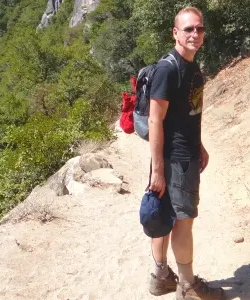
James Ian is a national park, camping and hiking expert.
He has dedicated his life to travel, visiting more than 80 countries, all 7 continents and most of the national parks in the United States. With over 35 years experience in the travel industry, James has worked on cruise ships, at resorts and hotels, and as a travel planner who’s helped hundreds of people plan successful trips to US national parks.
Based on his experience visiting our national parks multiple times, in-depth research and expertise as a travel planner, James has published detailed itineraries for many of the major national parks in the US. These itineraries, as well as in-depth park guides, and other resources will help you have your own incredible trip to US national parks without stress and hassle.
As a national park expert, James has contributed to many publications, including USA Today, Newsweek, Time Business News, Savoteur, Best Trip, and Wired.
I’m a member of the Amazon Services LLC Associates Program. As an Amazon Associate I earn from qualifying purchases.
